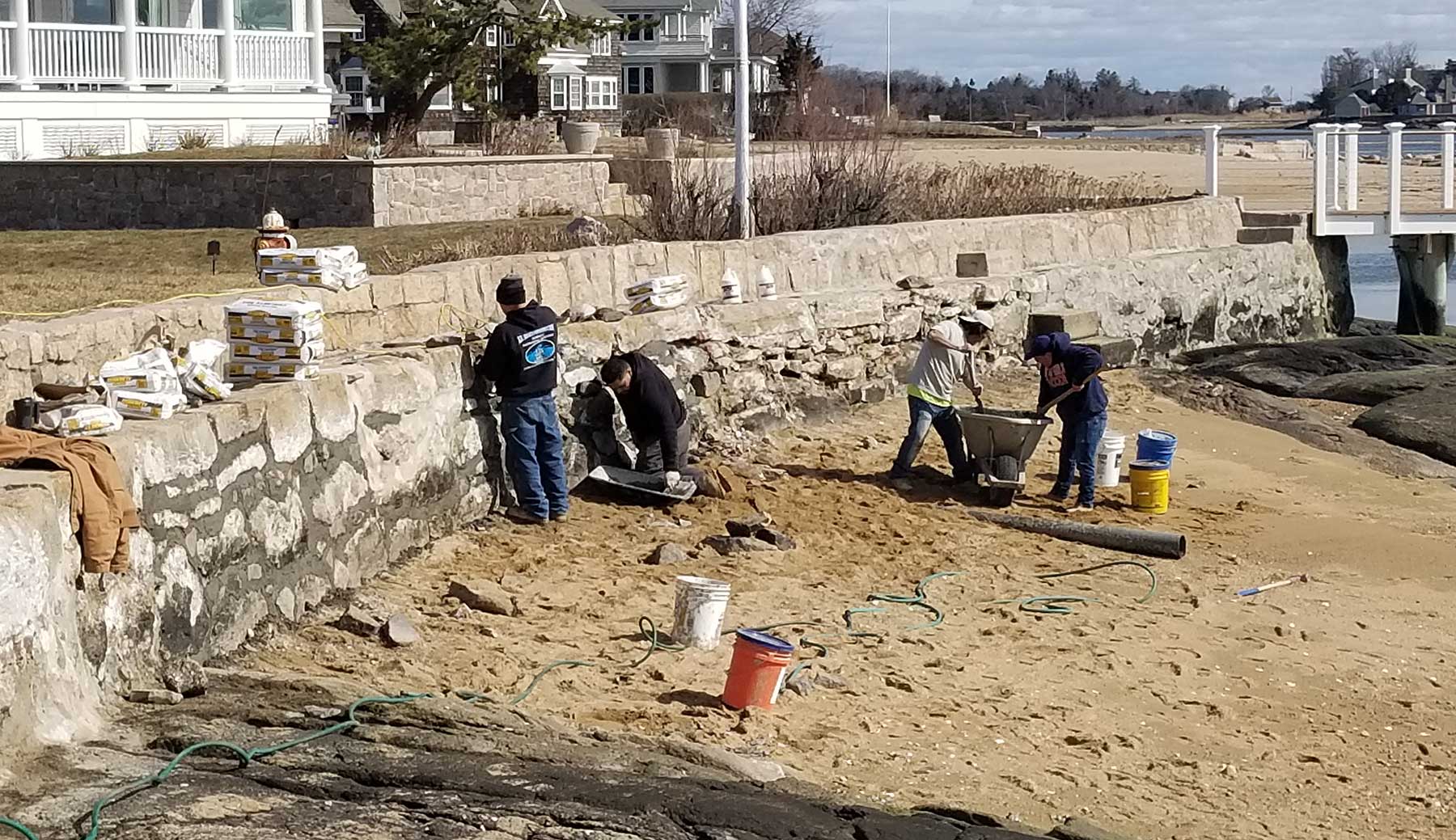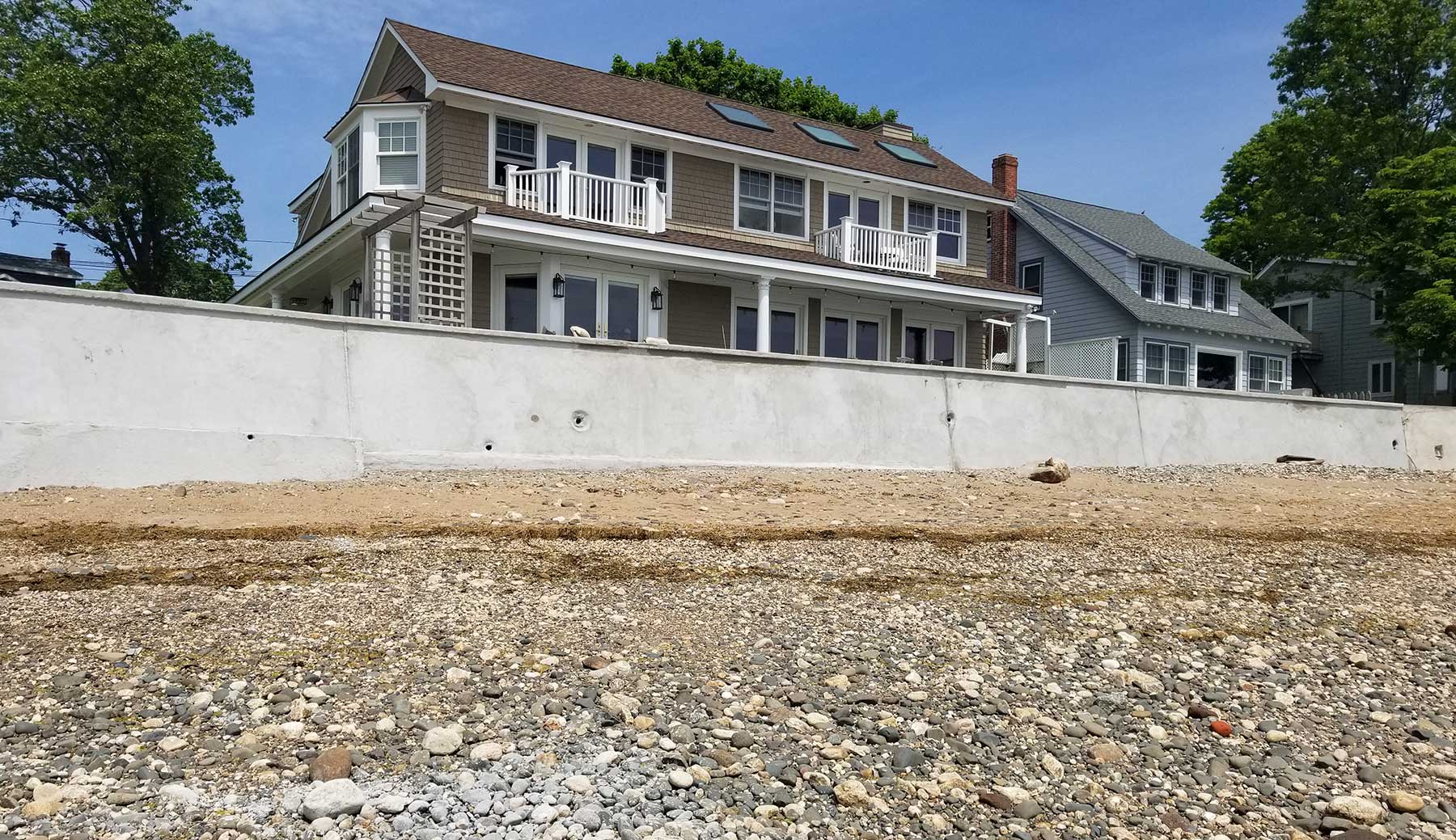Many people in the Connecticut shoreline area have residential seawalls. They rely on them to keep their home safe from large swells and storm surges. Yet, these structures, which seem to be incredibly durable and long-lasting, do need maintenance and upkeep. If you have not had your seawall inspected to ensure it remains in good condition, now may be the time to do so.
What Does Seawall Maintenance Include?
The most significant step for property owners is to hold an inspection of their seawall every five years (or more). This allows for insight into the condition of your seawall to determine if it needs repairs or maintenance.
How Long Does a Seawall Last?
A variety of factors play a role in how long a residential seawall will last, including the location as well as the amount of maintenance it receives over time. Most of the time, with good preventative maintenance, your seawall can last 30 to 50 years, or sometimes longer. However, that time is cut to around 20 years or less if they do not receive routine attention or if they are not built properly.
Signs That Your Seawall Needs Care
Good seawall protection requires ongoing maintenance, starting with a full inspection. When you use seawall inspection services, the team will look at various factors to determine the current condition. There are some signs that your seawall needs repairs, including:
- Cracked Slabs. You may notice a crack below the cap of the seawall or near the barnacle line. This indicates there is excessive outward pressure from the soil behind the seawall.
- Slab Deterioration. Sometimes, the slab will not have any significant signs of damage, such as leans or cracks. However, some deterioration can still occur due to the abrasion from the water.
- Leaning Slabs. This is not an uncommon occurrence, especially when it comes to concrete seawalls and metal seawall construction. The slab could be leaning out toward the water, which often means the deaden tie-backs are no longer functioning. However, if the seawall is leaning toward land, that could mean there are risks at the base of the seawall.
- A Drop in Soil Levels. You may need seawall repairs if you have a drop in the amount of soil behind the wall. This can lead to pooling water and gaps between the cap edge and soil. This can also cause sinkholes that are as much as 100 feet from the seawall.
- Rust Stains. Don’t overlook the signs of rust stains. This indicates the steel anchor rods or the reinforcing bars within the concrete are deteriorating. This can lead to damage to the wall.

Do You Need Seawall Reconstruction?
There are some situations where seawall reconstruction is critical, especially when the damage is so significant that there is a risk that the wall may collapse. However, many times, seawall repairs are possible.
When there is a need for rock seawall reconstruction, our team can provide a wide range of solutions to improve outcomes, including using a wide range of materials including:
- Metal seawall construction
- Concrete seawalls
- Wooden seawall construction
We can also provide a wide range of repair services, including seawall repointing. The goal is to address the problem and also provide you with a long-term solution. This is one of the most important components of protecting your home’s value and ensuring your safety. You do not want to avoid routine maintenance and upkeep.
Talk to Our Team About Your Needs Today
When it comes to ocean or lake seawall construction, our team at K.E. Braza is ready to work with you. Contact us to learn more about the solutions available to improve the safety and durability of your seawall.

